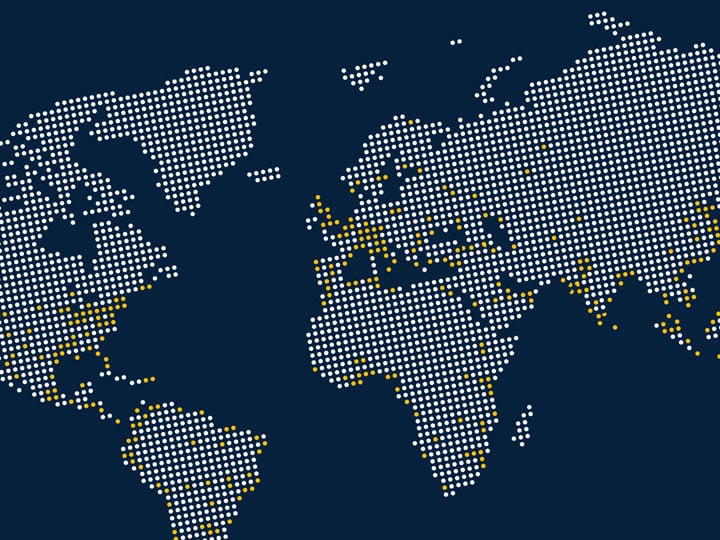Save Energy and Achieve Peak Building Performance with an Airtight Building Enclosure
With up to 30% of your building’s energy usage to compensate for air leakage, the need to control the air entering and leaving your building is more than an air quality issue. It’s a building efficiency and cost issue. By making a building more airtight and incorporating a balanced ventilation strategy, less of the conditioned air is lost through the building enclosure, reducing the load on the mechanical systems. This not only puts less stress on the mechanical systems but also allows for more efficiently sized equipment.
With Intertek’s “Whole Building Air Barrier Solutions”, building owners can be assured that their building enclosure is airtight, meeting required performance targets required by code and high-performance building standards. This will all lead to obtaining optimal energy efficiency for the whole building.
Whole Building Airtightness Testing
Detailed airtightness testing is the foundation for understanding your building's performance. We conduct rigorous testing aligned with industry standards (ASTM, USACE, ISO) to precisely measure air leakage rates. This data helps you verify code compliance, target improvement efforts, and optimize the sizing and operation of mechanical systems for ultimate energy savings.
Air Leakage Identification and Resolutions
Hidden air leaks can be challenging to pinpoint. Intertek employs advanced techniques, including infrared thermography and diagnostic testing, to locate leaks accurately—even those concealed within the building structure. Additionally, our Building Science Solutions team provides proactive consulting during the design and construction phases, minimizing the risk of air barrier failures and costly repairs down the line.
Building Performance: Compliance and Energy Efficiency
Navigating the complex world of air barrier codes and testing standards can be overwhelming. Intertek's experts guide you through the requirements, helping you design an air barrier system that matches your building's needs and performance targets. We develop holistic strategies that prioritize energy optimization alongside other essential building health considerations.
Common Standards for Air Barrier Testing
- ASTM E1827 – Standard Test Methods for Determining Airtightness of Buildings Using an Orifice Blower Door
- An alternative to ASTM E779 that allows for testing a wider range of buildings
- ASTM E1186 – Standard Practices for Air Leakage Site Detection in Building Envelopes and Air Barrier Systems
- ASTM E779 – Standard Test Method for Determining Air Leakage Rate by Fan Pressurization
- A common method for testing the overall airtightness of a building
- ASTM E3158 – Standard Test Method for Measuring the Air Leakage Rate of a Large or Multizone Building
- Designed specifically for large buildings with complex configurations
- The United States Army Corps of Engineers (USACE) Air Leakage Test Protocol for Building Envelopes
- A rigorous standard often used for government buildings or projects seeking high levels of airtightness
- ISO 6781 – Thermal Insulation Qualitative Detection of Thermal Irregularities in Building Envelopes - Infrared Method
- ISO 9972 – Thermal Performance of buildings – Determination of air permeability of buildings – Fan pressurization method
- ASTM C1060 – Standard Practice for Thermographic Inspection of Insulation Installations in Envelope Cavities of Frame Buildings
- UL 1784: Standard for Air Leakage Tests of Door Assemblies and Other Opening Protectives
- RESNET: (Residential Energy Services Network) establishes standards for energy efficiency, including specific airtightness targets for residential buildings
Prevent Air Barrier Problems from the Start with Intertek
Partner with Intertek for comprehensive building enclosure consulting during the design and construction phases. Intertek’s Building Science Solutions team provides expert assessments of design details, installation practices, and material choices to help you create an effective air barrier from the ground up. With our proactive quality assurance services, you can minimize the risk of failing final tests and ensure lasting building performance.
Achieve superior building performance with Intertek, an industry leader in air barrier testing and consulting services. Our team of seasoned professionals leverages in-depth expertise and advanced techniques to evaluate your buildings air barrier performance for airtightness. We guide you through the complexities of codes and standards, design, best practices, installation methods, and material choices to create an effective air barrier from the ground up.
Knowledge Center
Building Health & Wellness: An Overview of Services
Acoustical Testing & Consulting Resources
Remote Pre Inspections for NFPA 80 / 101
Protek - Safety. Everywhere. Every Day
Fire Doors 101: Your Guide to Testing and Certification - Webinar Recording
Tornado Testing & Certification Requirements - Webinar Recording
Plumbing Products Testing & Certification - Webinar Recording
The Evolving Code Evaluation Process White Paper
Proposition 65 & the Furniture Industry Webinar Recording
Why Planning for FCC Certification is Key to Success in the Door Hardware Industry White Paper

Upcoming Tradeshows & Events



